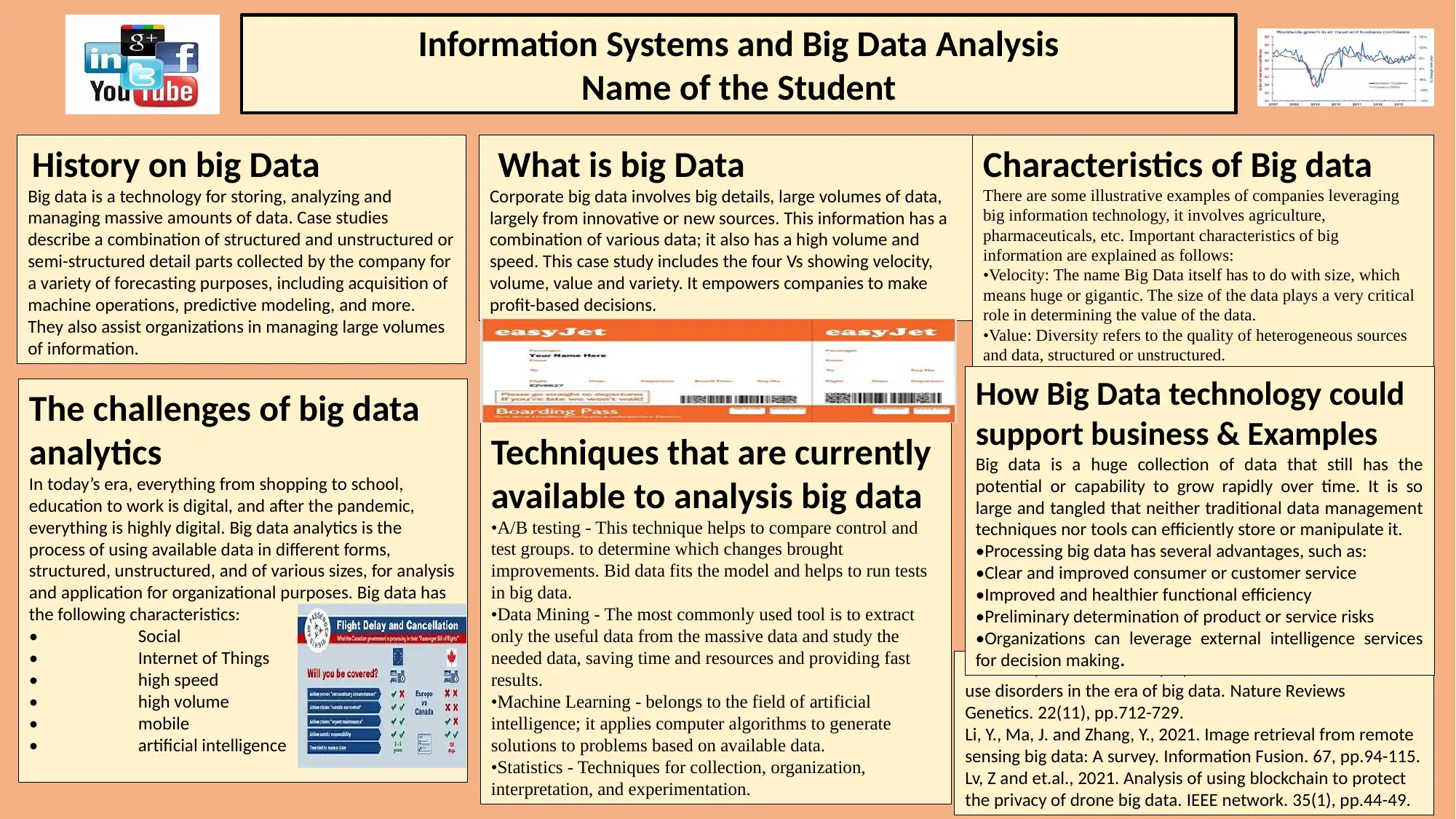BMP4005 - Information Systems and Big Data Analysis Report 2022
VerifiedAdded on 2023/06/07
|1
|683
|259
Report
AI Summary
This report provides an overview of big data, its characteristics (velocity, value, volume, diversity), and the challenges associated with its analysis. It discusses techniques currently available for analyzing big data, such as A/B testing, data mining, machine learning, and statistics. The report further explores how big data technology can support business objectives, providing examples of improved customer service, enhanced functional efficiency, and risk determination. The document also highlights the ability of organizations to leverage external intelligence services for decision-making. This student-contributed solution is available on Desklib, where students can find a wealth of study resources.




![[object Object]](/_next/static/media/star-bottom.7253800d.svg)